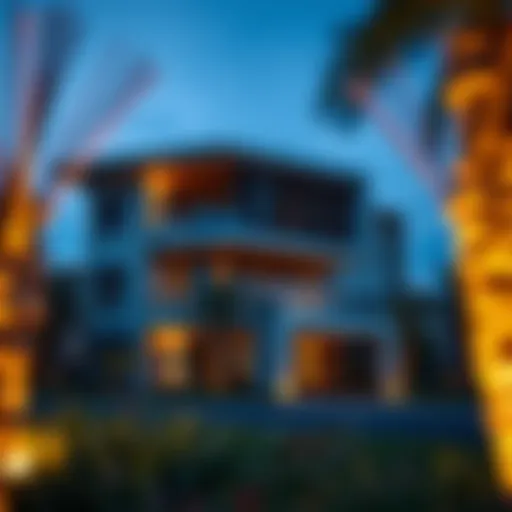Understanding Dubai's Complex Real Estate Buildings
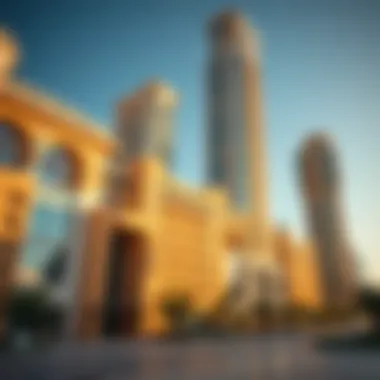
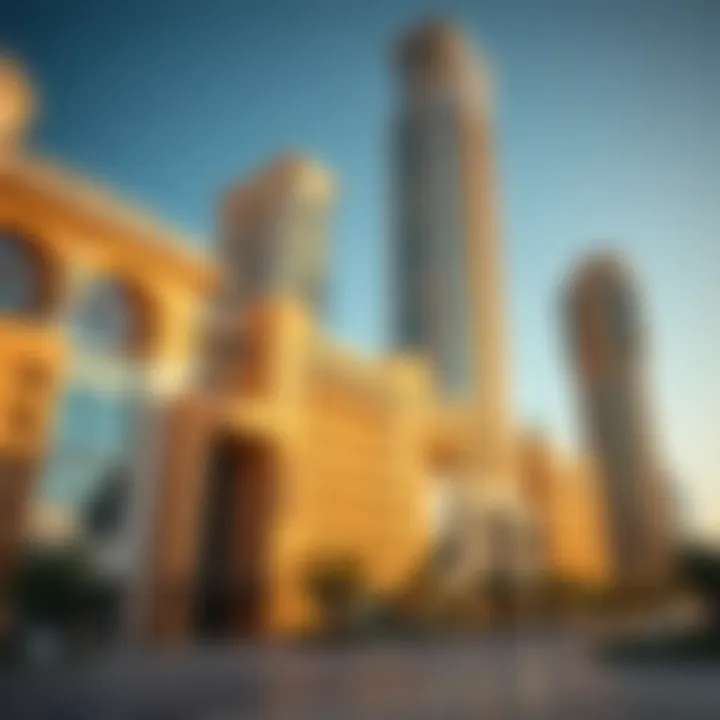
Intro
When you step into the realm of real estate in Dubai, you quickly realize it’s much like navigating a labyrinth. The city is a mosaic of towering skyscrapers, lavish villas, and intricate apartment complexes, all of which have their own unique stories. This article takes a closer look at complex buildings, diving into the architectural marvels and the intricate legal webs that come with them. For investors and future residents alike, understanding this landscape is not just a benefit; it's essential.
Dubai's real estate market, famed for its striking designs and opulent lifestyle, often lures both local and international buyers. However, with high stakes and massive investments comes a host of challenges. From zoning laws to ownership regulations, potential pitfalls abound. Therefore, it is imperative to examine these complexities carefully to make informed decisions.
This article aims to bridge that knowledge gap, guiding readers through the essential aspects of engaging with complex buildings in this vibrant city. Expect to see an overview of current market trends, property investment insights, and practical tips to navigate this dynamic landscape. By equipping yourself with the right knowledge, you can confidently step into Dubai’s real estate scene, ready to make savvy investment choices.
Let’s start our journey with the current market trends that set the stage for complex buildings in Dubai's expanding skyline.
Understanding Complex Buildings
In the dynamic arena of Dubai's real estate, comprehending what constitutes a complex building is pivotal. These structures are not merely bricks and mortar; they encapsulate multifaceted designs and functions that cater to diverse urban needs. From residential havens to bustling commercial spaces, the importance of grasping the nuances of complex buildings lies in their potential to offer both investment opportunities and lifestyle choices.
Understanding complex buildings requires a keen eye on several essential elements. They serve as landmarks that reflect the city's aspirations and character. Investors and potential homeowners must consider factors like architectural style, intended use, and the iconic presence of these buildings in the bustling cityscape. Beyond just aesthetic appeal, understanding these dynamics helps one navigate regulations, pricing, and market trends, ultimately leading to informed decision-making.
As you delve deeper into the essence of complex buildings, keep an eye on the benefits they provide. For instance, many possess energy-efficient designs or adaptive reuse features that can lower long-term costs. Additionally, being aware of their role in enhancing community engagement or shaping urban narratives is crucial. This awareness is more than superficial; it fosters a more meaningful interaction with one’s living or working space, contributing to overall satisfaction.
In essence, a profound understanding of complex buildings shapes investment strategies, residential choices, and even urban planning philosophies. This journey is essential for anyone looking to thrive in Dubai's competitive real estate market, where every detail can define success or setback.
Defining Complex Buildings
Complex buildings can be characterized as multifaceted structures that house various functions and spaces. Unlike single-use buildings, these structures often combine residential units, commercial establishments, and leisure facilities under one roof or in a cohesive area. This concept optimizes land use and enhances the overall utility of urban environments, especially in a rapidly growing metropolis like Dubai.
Architectural Features
Architecturally, complex buildings are a blend of style and functionality. They often feature expansive lobbies, mixed materials, and intricate designs that signify luxury and modernity. High-rise towers with sky gardens or integrated public spaces are examples of how architecture meets lifestyle needs. Moreover, sustainability is becoming a hallmark of new developments, with many incorporating energy-efficient technologies that reduce their environmental footprint.
Types of Complex Buildings
- Residential Complexes: Residential complexes in Dubai are designed to offer comprehensive living experiences. They feature amenities such as swimming pools, gyms, and communal gardens. The key characteristic here is a sense of community; living in such complexes fosters connections among residents. However, potential buyers must be cautious of maintenance fees and regulations that could affect their living experience.
- Commercial Complexes: These are pivotal to Dubai’s economic landscape, serving as hubs for businesses, retailers, and service providers. A notable characteristic of commercial complexes is their strategic location in key business districts. They attract foot traffic, which is crucial for the success of the businesses housed within. However, the downside can be high rental costs and competition among various enterprises.
- Mixed-Use Developments: Mixing residential, commercial, and recreational spaces, these developments are a hallmark of modern urban planning. Their main advantage lies in convenience; residents have essential services at their doorstep while enjoying vibrant commercial hubs. The challenge, however, is ensuring that the balance between quiet living and lively commerce is maintained, which can vary from one project to another.
Ultimately, understanding these types of complex buildings allows investors to assess not just the physical structures but also the lifestyle and economic opportunities they offer. Being equipped with this knowledge can significantly impact decision-making in a burgeoning market like Dubai.
The Significance of Location
In the intricate tapestry of Dubai's real estate market, the significance of location cannot be overstated. This aspect serves as the backbone for various considerations ranging from property valuation to future growth potential. Investor sentiments, rental yields, and even lifestyle choices hinge on where a development is positioned. When contemplating a complex building, understanding its locale is essential, influencing decisions for buyers, expats, and even property managers.
Strategic Advantages
Choosing the right location for complex buildings in Dubai brings with it a plethora of strategic advantages. For one, proximity to key amenities such as public transport, schools, and healthcare facilities can enhance desirability. Locations near major business districts like the Dubai International Financial Centre (DIFC) or tech hubs like Dubai Internet City can offer significant investment returns.
- Connectivity to Transport: Well-placed developments near the Dubai Metro or main highways facilitate easier commutes, appealing to both residents and businesses.
- Surrounding Infrastructure: Availability of shops, dining options, and recreational spaces can greatly uplift the market value of residential or commercial complexes.
- Future Development Plans: Government initiatives aimed at expanding urban areas or creating new attractions can bolster property values over time. Keeping an eye on these plans is key to making sound investments.
A prime location typically translates to a premium on price, but understanding the long-term potential can justify that cost.
Neighborhood Dynamics
Diving into neighborhood dynamics lays the groundwork for sensible property investments. Understanding who lives and works in the area can provide critical insights into the demand for rental properties or the viability of commercial spaces.
- Demographic Insights: Families may seek residential complexes within safe and community-driven neighborhoods. Young professionals may prioritize proximity to business hubs and entertainment districts. Property managers should assess the demographics to tailor services accordingly.
- Cultural Context: Areas like Dubai Marina or Jumeirah Beach Residence reflect a lifestyle of luxury, while areas such as Deira may invoke a more traditional neighborhood ambiance, shaping the appeal of housing options present.
- Crime Rates and Safety: Comparing crime statistics in potential areas is crucial for residential complexes, as safety remains top of the mind for families and renters alike.
Before diving into an investment, it is wise to spend time in the neighborhood, understanding its pulse and community feel.
Accessibility and Infrastructure
A robust infrastructure in any location bolsters its appeal remarkably. Accessibility extends beyond transport; it encapsulates how easily potential residents can reach their places of work, schools, and essential services. In the context of Dubai, where traffic congestion can be a real hurdle, understanding infrastructure cannot be taken lightly.
- Road Networks: Strategically laid out roads minimize commuting time. Complex buildings nestled near major thoroughfares tend to see higher occupancies.
- Public Transport Options: Areas serviced by the Metro or bus systems are often more attractive to expats and young professionals, who might not rely on personal vehicles.
- Future Infrastructure Projects: Staying abreast of future developments, like new road expansions or Metro lines, adds significant value to the investment.
"Selecting a location with comprehensive infra ensures your investment can withstand the test of time and changing market dynamics."
Taking the time to evaluate accessibility and surrounding infrastructure ensures a well-rounded investment strategy for anyone entering the Dubai market.
Legal Framework for Complex Buildings
Understanding the legal landscape surrounding complex buildings in Dubai's real estate market is crucial for anyone involved—whether you're an investor, an agent, or a buyer. The legal framework provides a robust foundation that assures transparency and protects the rights of all stakeholders. Knowing the specific regulations and laws helps in navigating the myriad complexities in property ownership and management. Here’s a closer look into the critical aspects of this framework.
Property Ownership Laws
In Dubai, property ownership laws are multifaceted. Since the introduction of the Dubai Property Ownership Law in 2002, foreign investors have been given leeway to purchase properties in designated areas. This opened the floodgates for an influx of international investors, making Dubai a vibrant hub for real estate.
Even though foreign ownership is permissible, there are specific stipulations:
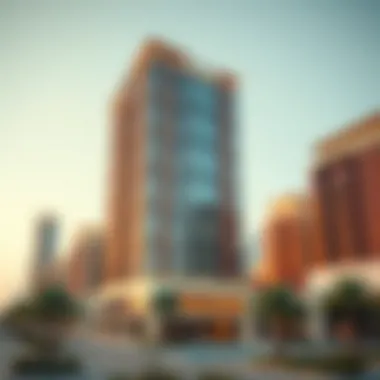
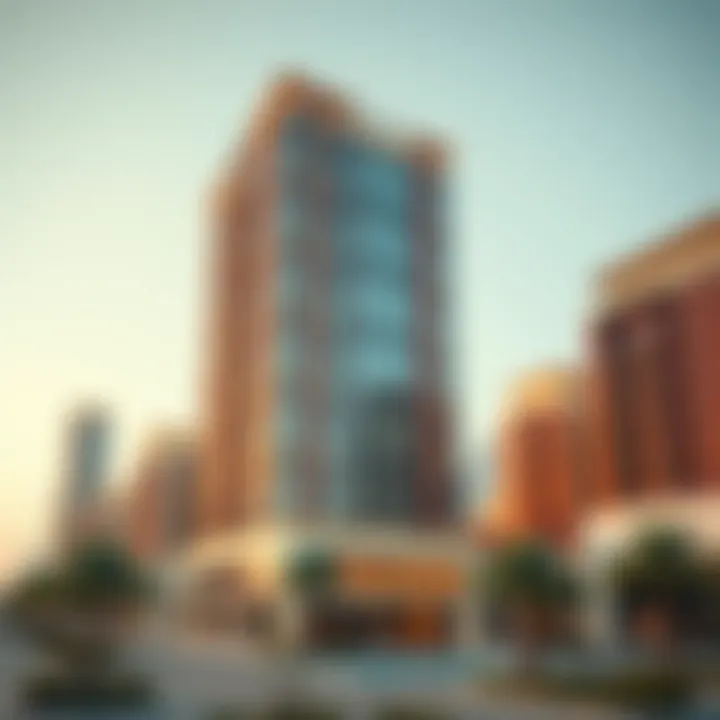
- Freehold Ownership: This allows 100% ownership of a property. However, it is confined to certain developments.
- Leasehold Ownership: Typically spans 99 years, where the leaseholder has the right to use the property but does not own it outright.
These laws ensure that property transactions are clear cut. It’s advisable for investors to consult with legal experts to fully understand the nuances of ownership laws since misunderstandings might turn into costly errors.
Regulations Governing Construction
Construction regulations in Dubai are strict and carefully enforced. These guidelines ensure that all buildings adhere to safety standards and architectural integrity. Developers must secure various permits before breaking ground, including:
- Building Permits: An essential step that requires the submission of architectural plans.
- Environmental Clearances: A necessity to ensure compliance with environmental preservation.
Failure to comply with these regulations can lead to project halts or significant fines, impacting timelines and budgets drastically. Furthermore, it’s not just about adhering to current regulations; staying aware of changes or updates is equally important for continued compliance.
Impact of Freehold vs. Leasehold
The choice between freehold and leasehold has significant ramifications for property investors in Dubai. With freehold ownership, the investor enjoys complete control and the freedom to sell or lease the property without restrictions. This ownership model is appealing but tends to come at a premium price.
On the flip side, leasehold agreements present a different set of advantages and disadvantages:
- Lower Entry Cost: Leasehold properties often allow you to enter the market at a lower price point.
- Long-Term Investment: While you don’t own the land outright, the right leasehold can be a stable investment if the property is in a sought-after area.
"In real estate, knowledge of laws is as valuable as the property itself."
Investment Considerations
Investing in complex buildings in Dubai is a significant undertaking. Understanding the investment considerations related to such properties can sharpen the decision-making process for investors, particularly for those who may not be familiar with the intricacies of the local market. This section aims to shed light on the key components that shape investments in these multifaceted structures, guiding potential stakeholders in making informed choices.
Assessing Value and Returns
When it comes to complex buildings, the assessment of value and returns is crucial. The process isn't just a matter of looking at the purchase price or rental yields but digging deeper into the property’s potential. Factors influencing a complex building's value might include:
- Location: The saying "location, location, location" holds true. Proximity to amenities, attractions, and major transport links can significantly affect demand.
- Building Amenities: If a building offers pools, gyms, and other attractive features, it can command higher returns.
- Market Demand: Understanding supply and demand in that locality helps predict potential appreciation or rental income.
Investors should also consider performing a comparative market analysis to gauge how the property stacks up against similar offerings. This approach not only helps in understanding what buyers or renters might be willing to pay but also highlights any disparities in market positioning.
Financing Options
Financing complex buildings involves navigating a variety of options that are tailored to match diverse investor needs. Here are common financing choices that investors might consider:
- Mortgages: Traditional bank loans are often the first route an investor explores. These loans can be tailored in terms of duration and interest rates, thus allowing for flexibility.
- Equity Financing: Partnering with investors or real estate investment trusts (REITs) can diversify risk and provide the necessary capital without incurring debt.
- Government Programs: Dubai occasionally offers schemes targeting foreign investors, which might include incentives or relaxed regulations, cheering on less experienced investors.
It’s vital that potential investors thoroughly understand the terms of any financing option they pursue. Ensure that interest rates are competitive and that loan terms are structured to provide liquidity over time.
Market Trends and Projections
The real estate market is a living entity that fluctuates based on a myriad of factors. Recognizing current trends and projecting future behaviors can spell success or failure for investors in the complex building sector.
Key trends to watch include:
- Sustainability: There's a growing emphasis on green buildings in Dubai. Properties that feature energy-efficient designs and materials not only attract more tenants but may see higher investments.
- Technological Integration: Smart buildings are here to stay. Investors should look for properties with integrated technologies that enhance user experience and reduce operational costs.
- Market Demand Shifts: Changes in demographic trends, such as an influx of expatriates and varying expatriate preferences, alter what types of buildings are sought after.
Future Projections
Consider consulting reports from reliable sources such as Dubai Land Department or Knight Frank, which annually provides insights into the real estate market in Dubai. Understanding future projections about economic growth, tourism numbers, and demographic shifts will equip investors with a comprehensive view of the investment landscape.
"Investment in real estate is a marathon, not a sprint. A well-researched approach can yield substantial rewards over time."
By grasping the nuances of investment considerations in Dubai's complex building market, stakeholders can better position themselves for successful investments.
Managing Complex Properties
Managing complex properties goes beyond simply collecting rent or overseeing maintenance tasks; it embodies a crucial aspect of the real estate landscape in Dubai. The intricate nature of these buildings demands a level of expertise and attention that can have significant implications for investments and tenant experiences. As the saying goes, "You don't get a second chance to make a first impression," and this holds especially true in the world of real estate. A well-managed complex can significantly enhance property value, reduce vacancy rates, and foster community spirit among tenants.
Roles of Property Management
Property management teams serve as the backbone of complex properties. Their roles encompass a wide range of responsibilities, from strategic planning to day-to-day operations. To break it down:
- Tenant Liaison: Property managers act as the go-between for tenants and landlords, ensuring that issues are addressed timely and efficiently.
- Financial Oversight: They handle budgets, track income, and manage expenses, all while ensuring profitability in alignment with market conditions.
- Legal Compliance: Property managers stay abreast of local laws and regulations, reducing liabilities for property owners.
This multi-faceted role requires not just knowledge, but also people skills, as they navigate the diverse needs and demands of different tenants. In a city as dynamic as Dubai, property managers often need to adapt to evolving market conditions and tenant expectations.
Maintenance and Upkeep
Regular maintenance and upkeep are the heartbeats of any complex property. A well-maintained building not only ensures tenant satisfaction but also prolongs the life of the structure and its amenities. Consider these key points:
- Routine Inspections: Regular checks of facilities such as pools, gyms, and elevators prevent small issues from spiraling into costly repairs.
- Emergency Preparedness: A solid maintenance plan includes strategies for emergencies—think fire alarms, plumbing issues, or electrical failures.
- Environmental Care: Increasingly, tenants are discerning about sustainability. Implementing green practices in maintenance can lead to cost savings while appealing to eco-conscious residents.
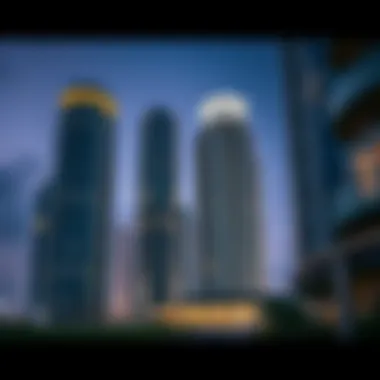
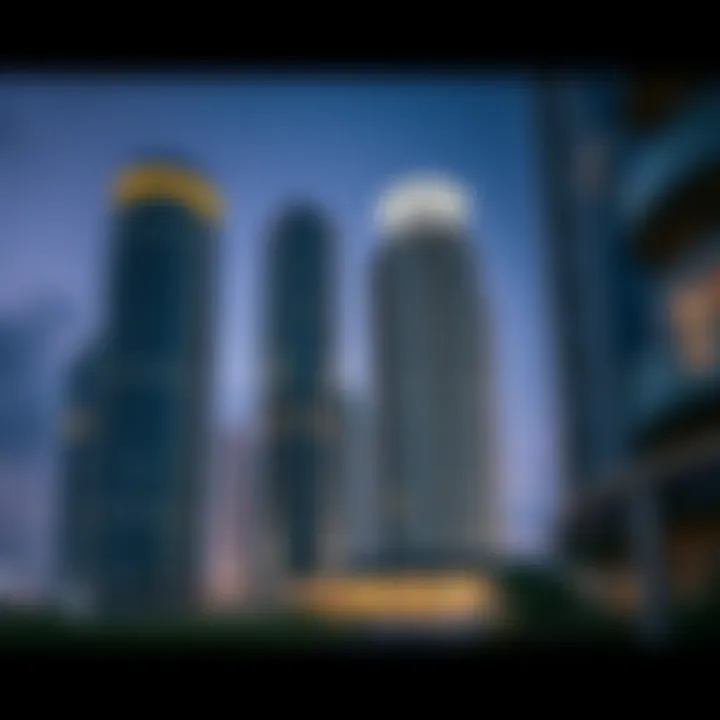
The importance of maintenance cannot be overstated; neglected properties not only diminish in value but can also tarnish the perception of an entire community.
Navigating Tenant Relationships
In the realm of property management, fostering positive tenant relationships is an art form. Building rapport with tenants leads to renewals and reduces turnover rates. Here’s how to effectively manage these relationships:
- Open Communication: Regular updates about property changes or maintenance schedules keep tenants informed and engaged.
- Feedback Mechanisms: Having systems in place to gather tenant feedback—from surveys to suggestion boxes—can significantly improve satisfaction.
- Conflict Resolution: Addressing grievances swiftly shows tenants that their concerns are valued. The aim is to resolve issues before they escalate.
Creating a community atmosphere where tenants feel valued not only improves retention rates but can also lead to word-of-mouth referrals, which are invaluable in a competitive market like Dubai.
Technology and Innovation
In today’s fast-paced environment, the fusion of technology and innovation with construction processes shapes the landscape of Dubai's complex buildings. This integration serves not just to enhance buildings’ aesthetics and functionality but also to boost their value in a competitive market. As investors and stakeholders, having a solid grasp of the technological advancements can lead to significant advantages, ultimately influencing purchasing decisions.
Smart Building Concepts
Smart buildings are designed to create environments that enhance the quality of life for occupants while optimizing efficiency. These structures leverage data and connectivity, combining advanced sensors, automation systems, and user interfaces for seamless functionality. By implementing smart technologies, property managers can monitor energy consumption and maintenance needs remotely.
Some notable aspects of smart buildings include:
- Energy Efficiency: Advanced systems can adjust heating, lighting, and cooling based on occupancy. For instance, buildings in Dubai often utilize smart meters to track and analyze energy usage, reducing overall costs.
- Automation: Automated systems simplify operations. For example, one can control blinds, lights, and HVAC systems via a smartphone app, making every corner of the building easily accessible.
- Enhanced Security: Smart surveillance and access control technologies offer a higher level of security. These might include biometric systems or mobile-based entry, adding peace of mind for residents and tenants alike.
Investors looking to delve into Dubai's real estate market should consider properties powered by smart technologies, as these not only cater to modern demands but also promise long-term savings.
Sustainability in Construction
Sustainability is no longer an option but a necessity in Dubai's real estate market. The Middle Eastern landscape faces unique challenges due to its extreme climate and limited natural resources. Hence, the adoption of sustainable construction practices has become pivotal. Here are some vital points:
- Eco-friendly Materials: Using materials that minimize carbon footprints while providing durability is key. Choices like recycled steel and low-VOC paints improve indoor air quality and reduce waste.
- Water Management: In arid regions, water conservation is critical. Many builders in Dubai incorporate rainwater harvesting systems and greywater reuse, promoting a sustainable approach to resource management.
- Solar Energy: Given Dubai’s sunny climate, solar panels are increasingly popular. Not only do they reduce dependence on conventional power sources, but they also align with Dubai’s long-term vision for sustainability.
Investors should be wary of the growing demand for sustainable buildings, as these significantly enhance occupancy rates and long-term value. By prioritizing sustainability, they can tap into a market that's progressively leaning towards eco-consciousness.
Future Trends in Complex Building Design
The future of complex buildings in Dubai takes a turn toward more innovative and imaginative designs. Potential trends include:
- Biophilic Design: Integrating nature into urban living is gaining traction. This might mean vertical gardens or green roofs that provide not only beauty but also improved air quality.
- Modular Construction: This trend promises quicker completion times and less waste, where parts of buildings are pre-fabricated and then assembled on-site. A notable appeal is the ability to adapt spaces for different uses without extensive renovations.
- Virtual Reality and Augmented Reality: These technologies are becoming essential tools for investors and buyers. They enable virtual tours of properties before construction is completed, giving a realistic feel for the space.
By keeping an eye on these trends, investors can stay ahead of the curve and ensure they are investing in properties that will remain in demand for years to come.
"In a city that's always on the move, the fusion of technology and sustainability is not merely advantageous; it's essential for thriving in Dubai's real estate market."
As the technological landscape evolves, so do the possibilities for innovation in complex building design. Investors and stakeholders who understand and adapt to these changes will surely find themselves at the forefront of a swiftly transforming industry.
Cultural Influences on Complex Buildings
Understanding the cultural influences on complex buildings is crucial for anyone looking to navigate Dubai's intricate real estate market. Dubai isn’t just a melting pot of cultures; it’s also a canvas where diverse influences have left an indelible mark on architectural designs and community layouts.
Historical Context
The UAE has a rich history that shapes its modern identity. The architectural influences can often be traced back to traditional Emirati designs, characterized by wind towers and intricate mashrabiya work, elements intended for cooling and privacy. As the city evolved, so did its buildings. Remnants of Islamic architecture meld with contemporary elements found in structures like the Burj Al Arab and the Sheikh Zayed Grand Mosque. This transitional architecture not only reflects a respect for heritage but also symbolizes progress and ambition.
Dubai’s historical journey from a small fishing village to a metropolitan hub serves as a backdrop for its unique architectural identity. For instance, the shift from traditional souks to modern shopping malls illustrates how cultural evolution impacts building styles.
Modern Architectural Styles
Today’s skyline in Dubai dazzles with a mix of modern and futuristic designs. Influences from around the globe, especially Western styles, have permeated its architecture. High-rise buildings like the Burj Khalifa and One Za'abeel stand as landmarks of innovation.
These structures often embrace glass and steel for a sleek look while integrating local motifs that pay homage to Arabic tradition. The fusion of cutting-edge technology with cultural nuances creates a unique aesthetic that is both globally recognized and distinctly Middle Eastern. This contemporary approach ensures that modernization doesn’t come at the expense of cultural authenticity.
Community Engagement in Design
Community involvement plays a significant role in the design and execution of complex buildings. Many developers now realize that engaging with local communities leads to better acceptance and sustainability of projects. Gathering feedback through open forums or surveys allows for incorporating the cultural values and preferences of potential residents.
Reflecting the community’s essence can be seen in projects like The Sustainable City, which prioritizes green spaces and community interaction, retaining traditional values while promoting modern living. This shift toward a more community-driven approach can lead to buildings that truly resonate with their occupants, rather than simply existing as structures.
"Buildings should be a reflection of where they are, rooted in the community's history and aspirations."
Challenges in Developing Complex Buildings
Developing complex buildings in Dubai comes with its share of challenges. As investors or potential developers, understanding these hurdles can lead to more informed decisions in a market that's as dynamic as the city itself. These challenges span across budget constraints, regulatory hurdles, and environmental considerations, each intertwining to shape the real estate landscape. Tackling these challenges while navigating the intricate regulation and competitive environment is crucial for success.
Budget Constraints
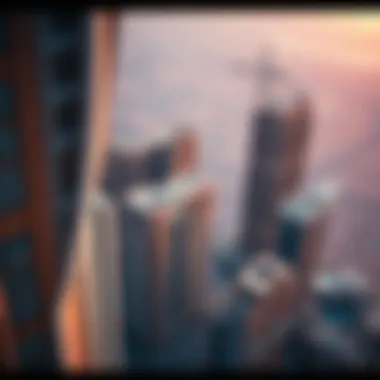

Money talks, and in the realm of real estate, it shouts. Budget constraints can make or break a project right from the planning stage. Developers must consider not just the immediate construction costs but also the long-term financial implications. Overruns on budgets can occur due to a variety of reasons—from unforeseen construction delays to shifting material prices. In Dubai, where the skyline is continuously evolving, staying within budget is imperative.
- Initial Cost Estimates: Building complex structures involves intricate calculations. It’s vital for developers to have a solid grasp on initial estimates that encapsulate everything from land acquisition to labor costs. There’s a saying, "measure twice, cut once," and in construction, that applies to budget estimation as well.
- Contingency Planning: Setting aside a contingency fund is not merely advisable but often essential. A 10-15% reserve on top of the estimated budget allows for flexibility against unexpected expenses that may crop up.
- Financing Options: Investors should explore various financing routes. Traditional bank loans, joint ventures, or even private equity. Diving into different financing avenues could alleviate the stresses associated with tight budgets—maximizing leverage could be the key to project viability.
Regulatory Hurdles
With every opportunity comes a set of regulatory challenges. Navigating the regulatory landscape in Dubai can feel like swimming upstream in a river of red tape. Government regulations dictate almost every aspect of building, from zoning laws to safety codes.
"In the biz, it isn't just about getting the job done; it's about checking all the boxes to keep regulators satisfied."
- Building Codes: Every structure must adhere to specific building codes which ensure safety, sustainability, and aesthetics. Familiarity with these codes is non-negotiable for developers.
- Approval Processes: The journey from concept to construction is paved with multiple layers of approvals. Securing permits can consume valuable time and resources. Developers often find themselves in long queues, awaiting clearance from various departments.
- Variances and Exceptions: Sometimes, a project needs to deviate from standard regulations. Applying for a variance can be a protracted process, requiring compelling justification and often a great deal of paperwork.
Environmental Considerations
As global awareness of environmental issues rises, so too does the significance of environmental considerations in construction. In Dubai, developers are increasingly required to incorporate eco-friendly practices in their building plans.
- Sustainable Design: Integrating sustainable designs can initially strain budgets but often yields dividends in the long run. Buildings designed with energy efficiency in mind are generally cheaper to maintain.
- Impact Assessments: Conducting environmental impact assessments is often mandatory in Dubai. Understanding how a new building influences local ecosystems and communities is essential not just for legal compliance, but for community goodwill as well.
- Green Building Certifications: Obtaining certifications like LEED can add an additional layer of complexity to the development process. While it may seem like an extra burden, certified buildings tend to attract tenants and buyers who are environmentally conscious, potentially enhancing property values over time.
Navigating through the complexities of developing buildings in Dubai is not for the faint-hearted. Yet, for those who can adeptly tackle budget constraints, regulatory hurdles, and environmental considerations, the potential rewards are considerable. The path may be fraught with challenges, but overcoming them can lead to the creation of not just buildings, but landmarks that define the city’s future.
Case Studies of Notable Complex Buildings
When it comes to navigating the maze of Dubai's real estate market, case studies of notable complex buildings offer a treasure trove of insights. These architectural marvels provide a lens through which both investors and residents can see the full picture of what it means to engage in such a dynamic environment. Not only do these structures showcase innovative designs and engineering feats, they also reflect the market's evolution, trends, and challenges.
"Analysis of unique projects casts light on successes and failures alike, guiding future undertakings."
Analysis of Iconic Structures
In any context, the buildings that become icons are often the ones that tell and retell stories. Take the Burj Khalifa; it’s not just a skyscraper; it’s a representation of ambition and engineering brilliance. The synergy of design and functionality can be studied to grasp how an iconic structure can elevate an entire area economically and culturally.
Each of these buildings comes with its own narrative. For instance, the Dubai Mall isn't just a shopping venue but a catalyst for tourism and retail growth. The architectural choices, like the use of reflective glass, create an inviting ambiance while minimizing energy costs, contributing to sustainability.
- Key elements of the Burj Khalifa:
- Height and design emphasizing verticality
- Integration of leisure facilities to attract visitors
- Use of cutting-edge technology for energy efficiency
Lessons Learned from Successful Projects
Looking at projects that have thrived can shine a light on best practices and strategic insights. For example, the Sofitel Dubai Jumeirah Beach integrates luxurious living with leisure, creating a demand for both short-term and long-term accommodations. By analyzing how they marketed their amenities, future investors can identify what attracts high-net-worth individuals.
Success does not happen by mere chance. Here's what can be gleaned from successes like the Dubai Marina:
- Community Features: Emphasis on creating community spaces
- Market Adaptability: Adjusting design based on tenant needs
- High Standards: Commitment to top-notch construction practices
Comparative Study of Failed Endeavors
Not all grand ideas pan out, and that’s where examining failures comes into play. The Dream Dubai development is a pertinent example. Planned to be a lush, luxury enclave, it fell short due to financial mismanagement and overestimation of market demand. Understanding these pitfalls can be highly informative for anyone looking to invest or develop in this market.
- Common pitfalls include:
- Over-leveraging finances
- Ignoring market saturation
- Underestimating timeframes for completion
By carefully analyzing both successful projects and failures, potential stakeholders can navigate the complexities of Dubai's real estate landscape more effectively.
For deeper insights into architectural design and failure analysis, resources like Britannica and Wikipedia can be invaluable. Be sure to tap into community discussions as well on platforms like Reddit to hear from those who have firsthand experience with investing in and living among these landmarks.
Ending
As we wrap up our exploration of complex buildings in Dubai's real estate market, it becomes evident that navigating this multifaceted landscape requires a sound understanding of various elements. The significance of grasping these complexities cannot be overstated. In a booming city like Dubai, characterized by rapid growth and innovation, potential investors and residents must be equipped with knowledge that enables informed decision-making.
Summarizing Essential Insights
A few key takeaways arise from our discussion:
- The architectural features of complex buildings not only define their visual appeal but also affect functionality and livability. The balance between aesthetics and practicality is crucial.
- Location plays a pivotal role in the desirability of a property; proximity to essential amenities, public transport, and recreational spaces often translates into higher property values.
- Understanding the legal framework is non-negotiable for anyone engaging in property transactions. With different laws for ownership and leasing, being well-versed can save significant financial headaches.
- Financial factors, including value assessments, market trends, and available financing options, shape investment choices. A solid grasp of these elements often dictates the success of property goals.
By synthesizing these insights, one realizes that Dubai's real estate market, particularly regarding complex buildings, is rich in potential yet rife with challenges. Success in this realm demands diligence and a proactive approach to learning and engagement.
Future Outlook in Complex Building Market
Looking ahead, the future of the complex building market in Dubai appears bright, yet unpredictable. With continuing advancements in technology, we can certainly expect stronger movements toward sustainability and smart building solutions.
Investors can expect:
- Increased integration of smart technologies aimed at improving energy efficiency and user experience within buildings.
- A trend toward mixed-use developments, which are increasingly popular due to their ability to create vibrant communities that cater to both residential and commercial needs.
- Ongoing regulatory reforms aimed at enhancing transparency and supporting foreign investments further strengthening the market conditions.
As we stand on the threshold of a new era in real estate, stakeholders must continuously adapt and align their strategies with evolving consumer preferences and regulatory landscapes. The key is to remain vigilant and open-minded about the shifting dynamics that define this exciting market.
"In the complex world of real estate, knowledge is your greatest ally."
For further insights and up-to-date information, resources such as Wikipedia, Britannica, or relevant government sites can be a valuable guide as you navigate this journey.





